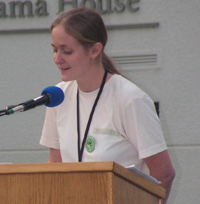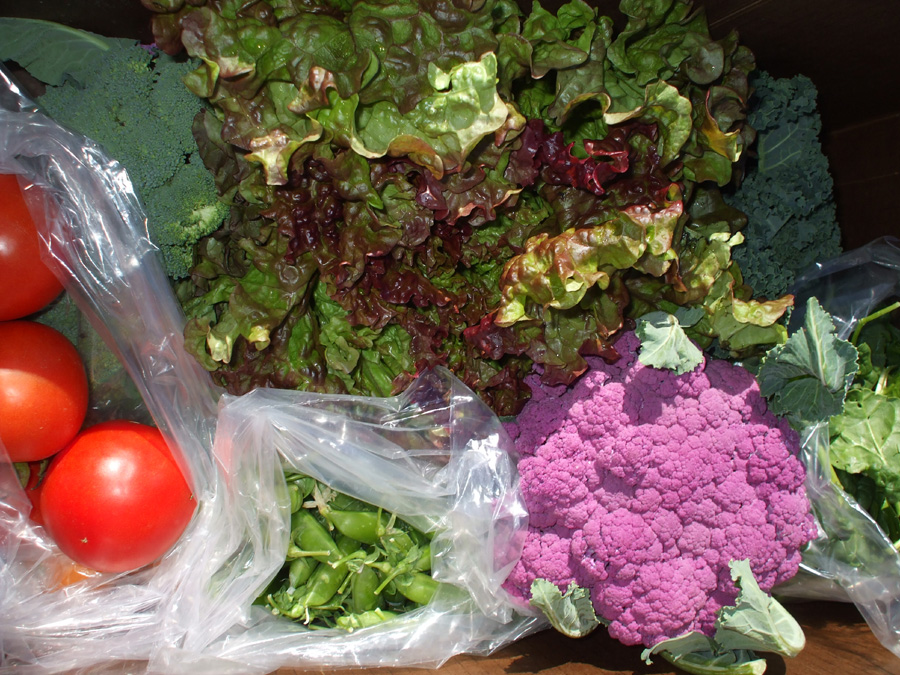We all love farmer’s markets—the kaleidoscope of offerings and photo ops, the free samples, the availability of real organic produce, and the fact that the organic goodies were still growing in a local field only a few hours ago are some of the reasons that such markets are so popular. But organic food is usually more expensive, harder to find, and limited to seasonal crops.
However, Daniel Laub, a staff member from Housing and Residential Services and a fervent advocate of organic food, thought the idea of selling “green produce” on campus was viable. He got together with Katie Maynard, our campus sustainability coordinator, and they pitched the idea to John Givens, a local organic farmer who Daniel has worked with for several years. Daniel and Katie suggested that selling organic produce to the 30,000 people who are on the UCSB campus daily might create a win-win situation. Givens could cut out the middleman to keep prices reasonable and still make a profit, the UCSB sustainability program would do the advertising, and, hey, the campus market is all for “green” produce.
Mr. Givens agreed on a trial run. As a result, the UCSB Community Supported Agricultural Program (CSA) premiered on January 28 with its first hand out of a trial share. Customers can purchase a trial share for two weeks at a discount with no obligation to continue; full CSA members have a choice between a small share which gives them 10 different items for $30 per week for 12 weeks, and a large share which gives them 12 items for $40 per week for 12 weeks. The items are pre-selected according to what crops are in season, although participants’ preferences will be taken into account in future deliveries. UCSB shares are collected at a designated drop off point on campus, the boxes are recycled, and other local community drop off points are being arranged.
For more about the John Givens Farm and the CSA program, see their web site. As it points out, the customer benefits of community supported agriculture include:
- Freshest produce possible (unless you have a garden).
- Probably better tasting produce than you are currently eating (unless you’re eating “Something Good” vegetables from John Givens Farm).
- Value, as compared to shopping at other places offering organic produce.
- Seasonal variety (you might try something new).
- Solid waste reduction due to less packaging and return of box each week.
- Improved nutrition from mineral-rich organic fruits and veggies.
- Weekly flyer with recipes, updates, and tidbits to keep you connected.
- Build community through direct contact with the farm and interactions with other conscious consumers.
- Reduce the amount of transportation and carbon footprint in the produce you eat.
Sounds good to me!
Editor’s note: For a broader view of the issue of local produce versus global trade, see http://www.policyinnovations.org/ideas/briefings/data/local_global.




